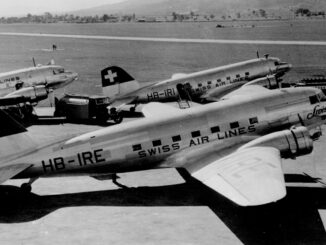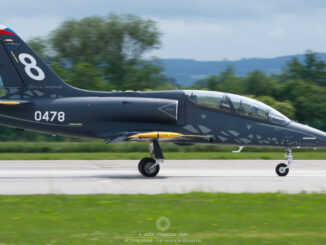 Christen Industries A-1 Husky (c/n 1079, HB-KCI), operated as a glider towing aircraft at Flugtage Fricktal-Schupfart 2018, Schupfart, July 2018.
Christen Industries A-1 Husky (c/n 1079, HB-KCI), operated as a glider towing aircraft at Flugtage Fricktal-Schupfart 2018, Schupfart, July 2018.
In 1972, Frank L. Christensen, the pioneer of modern kit planes for homebuilding, founded Christen Industries company with seat in Hollister. The first, and also the most famous aeroplane, offered by the company was Christen Eagle, an aerobatic sporting biplane offered as a kit for amateur build.
In the early 1980s, the company acquired Aerotek aviation manufacturer, purchased rights to produce Pitts Special aerobatic aeroplanes and then moved to Afton, Wyoming. Shortly after, Christen Industries began works on developing light utility aircraft, designated A-1 Husky. An interesting fact is that the A-1 was one of the first light aeroplanes designed with use of CAD software.
In 1986, the aeroplane performed its maiden flight and on 1st May 1987 received the FAA certificate.
The A-1 Husky was powered by 180 hp Lycoming piston engine, was a high-wing aircraft with two seats in tandem configuration and dual controls. Its airframe was made of steel tubes and covered with thermoplastic polymer.
Due to relatively powerful engine and maximum gross weight of approximately 1,000 kg, the aeroplane was characterized by hight power-to-weight ratio and short take-off and landing performance. That made the Husky an ideal aircraft for bush and fun flying, as well as utility duties such as aerial patrols and inspections, glider towing and observation tasks. Among the most notable operators of the A-1 aeroplanes the US Department of the Interior and the US Department of Agriculture are usually being mentioned, as well as Kenya Wildlife Service.
In 1991, Christen Industries was acquired by Aviat Aircraft, Inc. and production of its aircraft was continued under the new owner. The A-1 Husky was further developed by Aviat successfully introduced new variants into the market.
In 2018, Aviat Aircraft announced the latest version of the aircraft that included more than a dozen upgrades to the already legendary aircraft. Among them there were extended landing gear, new avionics suite with digital displays, modernized autopilot and new, more comfortable seats.
Currently, the Husky is still offered by Aviat, in two main variants, powered by 180 and 200 hp Lycoming engines.
The aeroplane with construction number 1079, featured within our Photo of the Week series, was built in 1989 and represents the A-1A variant, as originally developed and built by Christen Industries. For many years, the aircraft was operated by Segelfluggruppe Basel Fricktal in Switzerland, with glider towing being its main duty. In 2022, the aeroplane was acquired by Flugplatzgenossenschaft Münster in Germany.
Our current photo was taken in July of 2018, at an air show organized by Fricktal-Schupfart aeroclub to celebrate its 50th anniversary. During that event, the A-1A Husky performed its usual duty of towing gliders participating the show.



